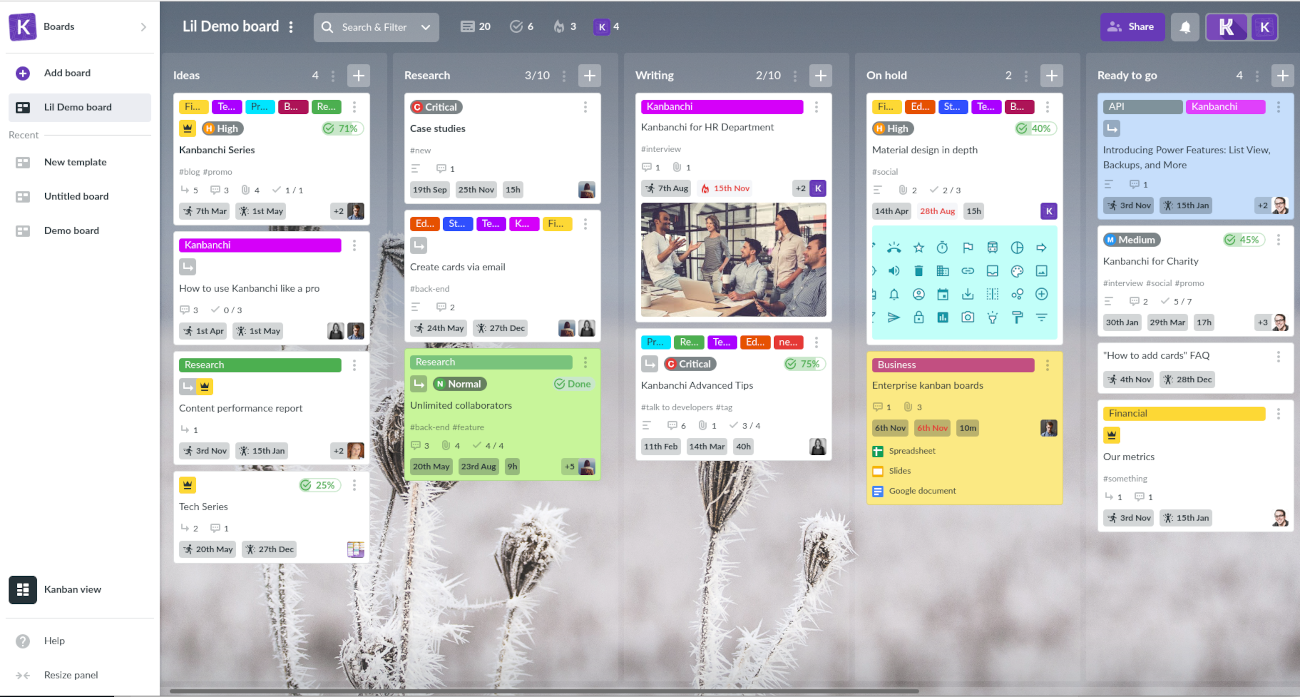In this Article:
Try Kanbanchi now
Start your free trial

As the number of confirmed daily cases of COVID-19 rises, the number of remote workers rises too. To prevent the second wave of economic shutdowns, the UK government returned to urging people to work from home: reducing the number of commuters from 64% to 59% in one week.
It’s likely that a majority of employees transitioned into a remote work environment months ago during the first wave of the coronavirus pandemic. Despite the initial transition being months ago, this newer work environment may continue to present challenges to employees.
Employees’ top remote work challenges include:
By helping employees to create productive home offices, businesses may build more successful long-term remote teams.
Home offices will be where a majority of employees work for the foreseeable future. Business leaders should help employees create a productive home office by leveraging the subsequent tips.
Businesses should encourage employees to establish their offices in the quietest locations within their homes.
A Clutch survey found that 27% of employees found interruptions to be their top remote work challenge. Interruptions break focus and decrease productivity because our brains find it difficult to switch between tasks.
To limit interruptions, employees should build their home office separate from their main living areas. A home office should be isolated from primary sources of interruptions such as family, friends, and pets. This may help to limit constant interruptions, helping your brain to stay on track.
The separation from main living areas also enables employees to better focus on work tasks rather than household tasks such as planning dinner or finishing the laundry. Beyond household tasks, working may lead to temptation such as watching TV. Nearly one-third (32%) of employees cited watching TV as the top distraction that would take them away from work.
A dedicated work environment also establishes physical boundaries that lead to greater productivity. The boundaries signal to the brain when it’s time to work and time to log-off, which helps mitigate burnout. By preventing burn-out, employees remain happier, healthier, and more productive.
Although difficult to create in a remote work environment, businesses should encourage employees to establish boundaries between work and home. Boundaries help to increase focus, stave off burn-out, and encourage lasting productivity.
Businesses should also provide employees with tools to organize their home offices and encourage their productivity.
The organization is key to building productive workplaces. A study conducted by Princeton University found that our brains prefer order and consistent visual reminders of disorganization such as cluttered desks reduce our ability to focus. After clearing clutter from their workspaces, the study’s participants were better able to focus, and their productivity increased.
To help employees remain organized, businesses should equip them with digital tools. Replace piles of sticky notes and loose papers with software solutions such as Google Workspace and project management platforms such as Kanbanchi.
Kanbanchi, for example, offers taskboards to visually represent the status of tasks and projects. Managers and employees can create taskboards by writing each task of a project on cards. These start in a column titled “To Do.” As work progresses, employees move them through different columns titled “In Progress” and eventually “Done.”

This helps employees to not only collaborate remotely but also maintain organized workspaces.
Businesses should invest in tools to encourage employees’ organization by offering digital solutions.
To promote sustained productivity, businesses should encourage employees’ choice of ergonomically designed items by providing stipends.
The risks associated with working at a desk may not be evident like the risks of working in positions that require manual labor. However, jobs that require employees to sit for the majority of their days present significant risk to workers’ physical health.
In addition to encouraging employees to form healthy habits such as taking moving breaks, businesses should invest in ergonomic solutions to mitigate health risks. By designing a home office to support proper posture and reduce physical exertion, the workspace becomes more efficient. One study found that the implementation of ergonomic methods led to a 16% increase in productivity.
Businesses may be hesitant to fund their employees’ purchases of ergonomic equipment. After all, ergonomically designed chairs may cost anywhere between $200–$2,000. However, businesses will likely secure a notable ROI by supporting employees’ health and productivity.
Although working in different locations, business leaders can still help employees create productive workspaces.
Business leaders should advise employees to build their home offices in quiet locations separate from main living areas. This separation not only limits distractions but also increases overall wellness and productivity.
Digital tools such as project management software help employees to collaborate and stay organized. By leveraging these solutions, businesses support employees’ ability to focus and remain productive.
Businesses may also invest in ergonomic solutions to encourage employee productivity. The risk reduction may not only increase employee efficiency but also lead to cost savings on healthcare.
Kate Russell is an Editorial Associate for Clutch — an Inc. 1000 private company that helps decision-makers determine the best B2B service providers to solve business challenges. She is also an HR research and content lead.
In this Article:
Start using Kanbanchi now
Start your free trial